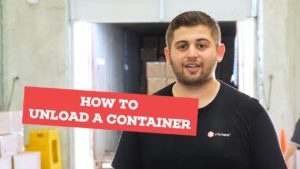
ShipHero Case Study: Good Company
Start a 3PL Two Weeks Before Black Friday? It’s Possible with ShipHero.
Good Company was approached by a large dinnerware supplier that needed a 3PL, just a few weeks before Black Friday. They would be Good Company’s first ever 3PL client and there was no room for error. Good Company needed a solution that could easily integrate with Shopify, and that would scale with them as they were looking to grow quickly. This was just the beginning.
Enter ShipHero. With Warehouse Management Software that can serve 3PLs just as well as brands, and a direct integration with Shopify, it was the obvious choice. After the first sales call and then onboarding, it became apparent that ShipHero was the right solution.
Video Transcript
We’d never been a 3PL before. ShipHero was the obvious choice. We were up and going in just a couple of weeks. ShipHero was the clutch tool in our belt that got us where we are. No doubt. ShipHero checks all the boxes. All of the fundamentals are there and then some. The tools are thought out. And they bridge the gap between software made for users and software built by developers.
Obviously, ShipHero is the chef that eats their own food. I think that they make great software because they use their software. It’s the multitool on our belt. We’ve been able to go from five or six hundred units shipped a day to six to ten thousand units, shipped a day in 18 months. Using multi item batch to pick high unit count orders.
We were able to slash pick time in half. The whole business has been built on the back of ShipHero managing the nuts and bolts of the operation. At best, other software is at feature parity in reality out of the box, ready to go in almost no time for the price and or the service level and support. There is no comparable offering.
Our CSM continues to be a great resource for us. Supports response times are getting faster and more intelligent. Even the people who onboarded us in the sales process continue to check in on the health of the relationship and the opportunities for them to either advocate or to problem solve for us and we don’t feel like the baton keeps getting passed.
It just seems like the support team just keeps getting larger and that’s a really good feeling.



